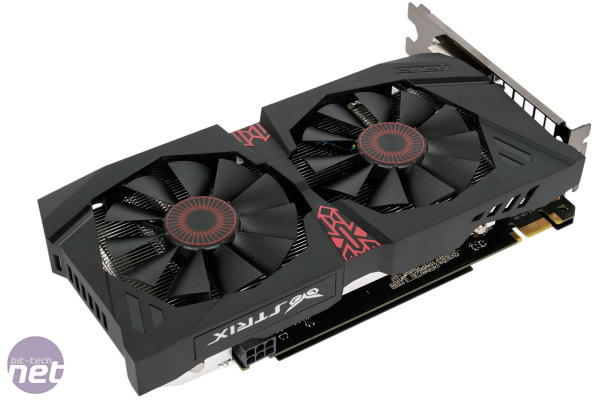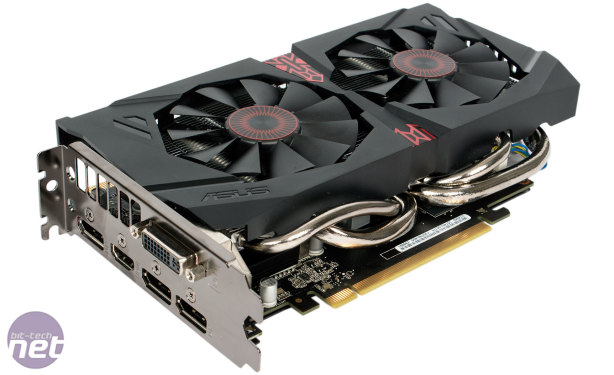Conclusion
AMD's competing mid-range line-up is confusing to say the least, with the R9 280 3GB, R9 280X 3GB and R9 285 2GB all offering slightly different specs as well as price and performance figures that overlap one another depending on the game tested and the exact SKU you're considering. This makes the job of assessing price versus performance somewhat difficult, as does the fact that there's no reference GTX 960 model to go on. We've also been told that at £190, the Asus card is one of the costlier GTX 960 parts. Furthermore, the market is always liable to a shake up with a new launch as well, so keep a close eye on prices over the next few weeks – the GTX 770 stock appears to be gone now, but there could still be some upcoming bargains if you're lucky.With that said, the R9 280 still appears to offer a slightly better price-performance ratio, given that you can buy it for £150. There's also the R9 285, starting at around £175, but £160 SKUs of the GTX 960 will look a little stronger against this. The specifications of the GTX 960, namely the 2GB frame buffer and 128-bit interface, may make it look weaker against some of AMD's cards, but even in our most demanding 1440p tests there's no proof of this. All in all, the £160 launch price is a well-chosen, sensible one. The GTX 960 doesn't dominate the market like the GTX 970 did when it launched, but it's far from being overpriced.
Of course, one area where the GTX 960 unquestionably takes the crown is in efficiency. If you are limited by power connectors, or you're particularly concerned about heat output and/or space in a small form factor build, for example, the GTX 960 is the mid-range card to get. The Asus Strix GTX 960 DirectCU II OC 2GB is a particularly small example too.
Features are also well worth considering when making your purchase, as the Nvidia card benefits from DX12 support, G-Sync, and other potentially useful features like MSAA and DSR. In fact, Nvidia says you can use DSR in games like League of Legends to render the game at 4K before downscaling to 1080p and still run it smoothly with maximum settings – it essentially applies anti-aliasing to the entire image rather than just detected edges. Alternatively, you could stick to standard 1080p and game passively in such games if you have a GTX 960 that supports this. AMD does have its own features to consider, especially FreeSync and TrueAudio, though these are only supported in the R9 285, not the R9 280 or R9 280X.
Compared with the GTX 760 it replaces, this is very much a features and efficiency upgrade rather than a performance one, as in that regard there's little change. In performance terms, the target is very much GTX 660 or even GTX 560 users, who are much more likely to be operating on a 2-3 year upgrade cycle.
Turning now specifically to the Asus Strix GTX 960 DirectCU II, it's undoubtedly quite a big step up from £160 to £190. Starting at £180 and with generally faster performance, the R9 280X has it beat on price-performance. However, as we said, the R9 280X has no support for FreeSync, nor will it natively support certain DirectX 12 features like the more modern Maxwell GPU does. The Strix GTX 960 is also a great overclocker, has high-quality power circuitry, plenty of connectivity and it runs very cool and quiet thanks to a cooler that is semi-passive but also sensibly sized – it should have no trouble fitting into the majority of standard and small form factor cases. While the Strix GTX 960 isn't for those seeking the pinnacle of bang for buck, then, it's still undeniably a very good card. There will be certainly be cheaper SKUs but if you want a premium GTX 960 experience, this is it.

-
Performance32 / 40
-
Features29 / 30
-
Value23 / 30


MSI MPG Velox 100R Chassis Review
October 14 2021 | 15:04











Want to comment? Please log in.